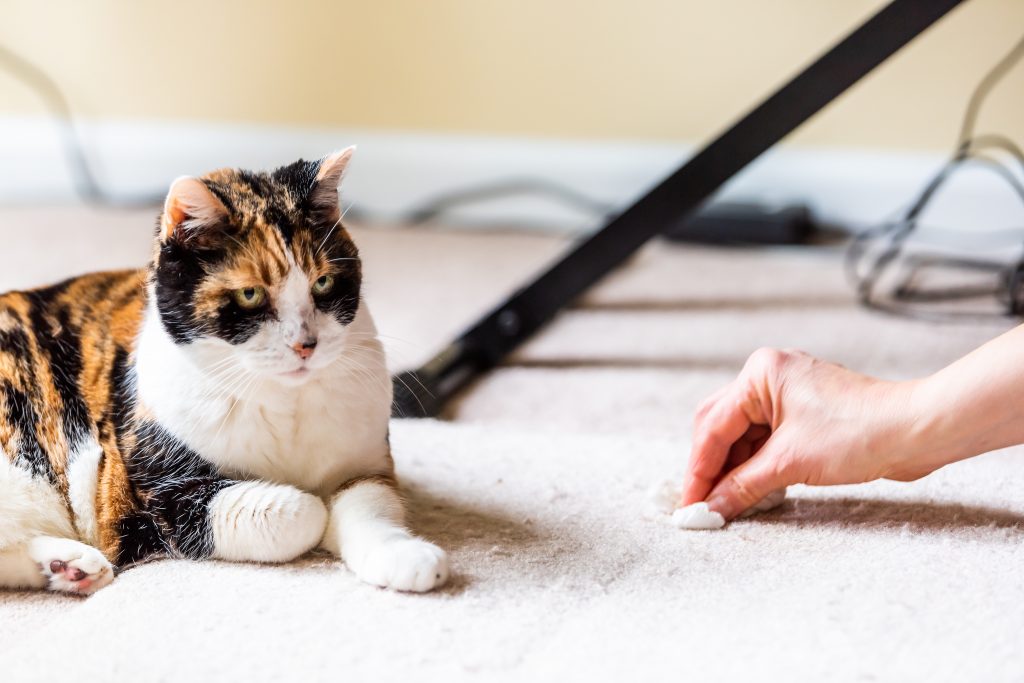Hairballs: When to Worry About Your Cat, And When to Simply Clean Up
Hairballs: When to Worry About Your Cat, And When to Simply Clean Up

The law of cause and effect states that every single action produces a reaction. In the world of cat care, the law of cause and effect can be readily seen. While some cat owners shake their heads at the sight and sound of feline regurgitation, hairballs are part of the natural order of life.
Hacking It Up
A yellow, hair-covered pile of stomach bile is usually enough to turn most people’s stomachs, and yet they are not entirely uncommon in homes shared by cats. From the terrible hacking and wheezing sounds, to the sticky mess left behind, it’s normal to wonder if they are, in fact, normal. If you think your cat is experiencing hairballs too frequently, it might be time a pet wellness exam from one of feline veterinarian specialists.
Frequency and Intensity
Just because hairballs are common, does it mean they are normal? Of course, when we apply the law of cause and effect it makes perfect sense that cats will hack up fur they cannot digest. However, that being said, it is important to know when hairballs signal something more serious.
Read Between the Lines
As we know, cats enjoy a tidy appearance. They are famous for self-grooming. As a matter of consequence, when they lick their coats clean they naturally ingest loose or dead hairs. Because their tongue is covered in sharp little barbs that face back towards the throat, they have no choice but to swallow the fur. A small amount of fur can be moved through their GI tract.
The Long Trip
A hairball is a blob of undigested fur that accumulates and forms in the stomach. Pushed out through the long esophagus, a hairball appears tube-like on the floor or ground. In addition to the fur, you might see partially digested food, grass, and digestive fluids.
When Hairballs Require Attention
Sometimes, hairballs remain in the stomach and grow too large to move, either through the mouth or via the digestive system. Hairballs can cause painful and serious gastrointestinal blockages that require immediate veterinary intervention. Emergency surgery can remove the hairball in these rare instances.
A Sixth Sense
Cats shed heavily during the fall and spring. As a result, you might notice an increase of hairballs during these seasons. Long-haired cat breeds may also be more susceptible to seasonal hairballs.
Occasional hairballs once a month are okay, provided your cat doesn’t have other worrisome symptoms like inappetence, lethargy, or withdrawal. However, hairballs once a week or once every 2 weeks can be a sign of food allergies, atopy (environmental allergies) or IBD (irritable bowel disease).
Generally, vomiting should not ever be accepted as a normal behavior. Because it is a symptom of so many potential illnesses, however, you might want to have your cat examined to rule out serious medical conditions if it seems to be happening more than normal.
Reducing Hairballs
Fortunately, there are ways to limit how much fur your cat swallows. Increase how often you brush out their coat. You can also schedule professional grooming sessions to keep them looking and feeling their best.
Additionally, some special diets and supplements can reduce shedding and fur ingestion.
It’s Going to Be Okay
Any changes to your cat’s behavior, appearance or overall health should be addressed without delay. We are always here for you at Parkside Animal Hospital.
